Important: Tsukiji inner market has moved to Toyosu in October 2018. Tsukiji Market’s tuna auctions have since relocated to Toyosu Fish Market. The Tsukiji outer market, home to shops and eateries, remains open and continues to welcome visitors.
Tsukiji Market, once home to the world’s largest wholesale fish market, is famos for its fresh seafood and fish. Although the wholesale market moved to Toyosu in 2018, Tsukiji’s Outer Market still thrives with many shops and eateries focused on selling delicious seafood.
If you’re in Tokyo and still shaking off some jet lag, Tsukiji Market is an excellent first stop. With shops and restaurants that open early morning, it’s the perfect place for a fresh seafood breakfast. You’ll also find a variety of produce and kitchenware that can serve as unique souvenirs.

What to do at Tsukiji Outer Market
The Tsukiji Outer Market is a hub for culinary experts and professional chefs. You can purchase fresh and select ingredients, savor a meal, or even master fish-cutting techniques.
Many shops sell high-quality utensils here, and you can ask for advice on what to purchase, depending on the intended use.
There are restaurants which specialize in fresh sushi, sashimi and sashimi rice bowls. There are a few eateries which sell traditional Japanese food (like Kobe beef) or international cuisine (like burgers) but the star attraction here is fresh fish and seafood.
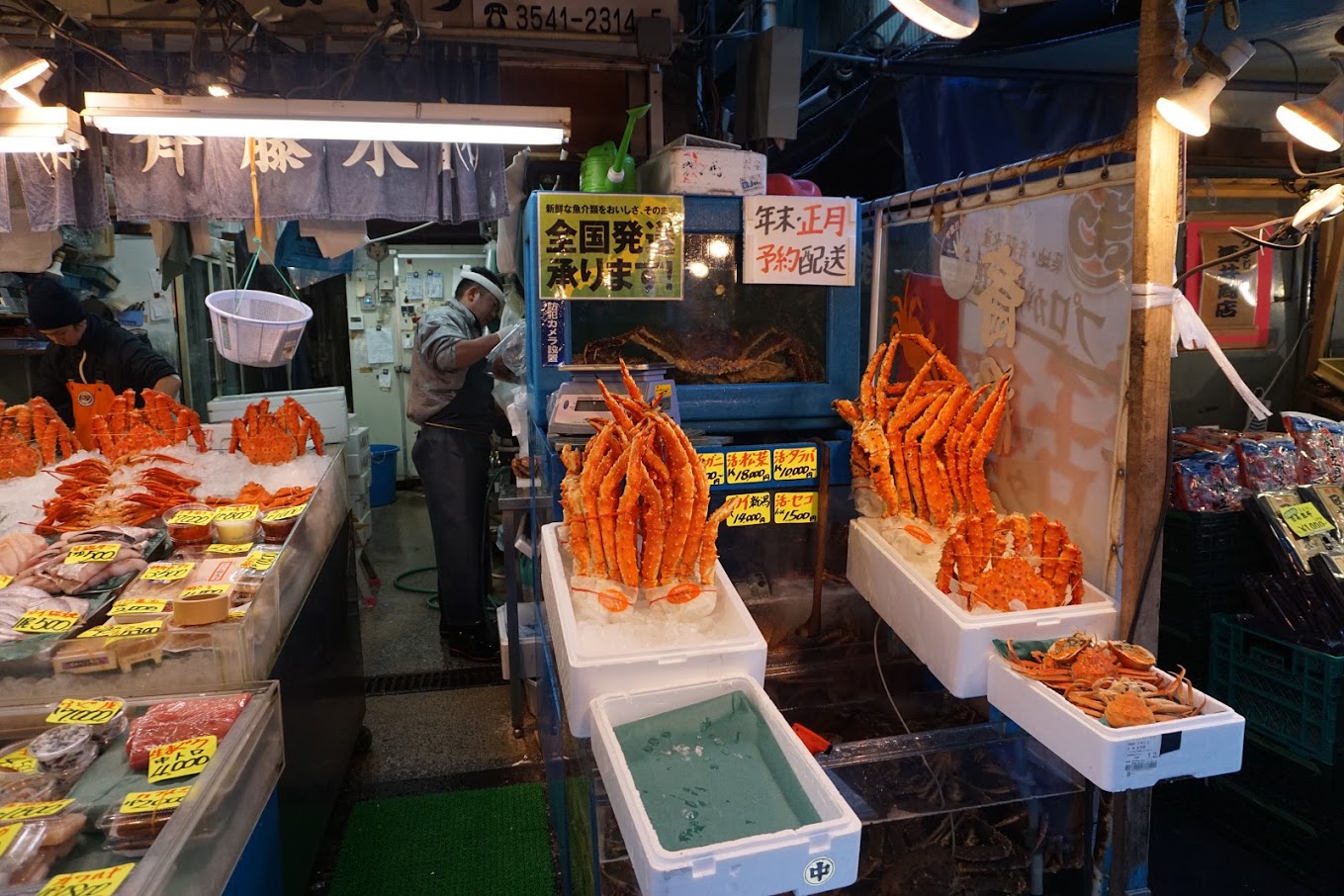
Shopping Guide for Tsukiji Market
Tsukiji market can be a little confusing for a first timer, which is why I put together a shopping guide to know what to expect from the area. I’m sharing the types of ingredients you can expect to find, as well as specific merchandise.
Ingredients at Tsukiji Market
Tuna
You’ll find nama-maguro which can be eaten fresh as sashimi or frozen tuna which is usually purchased by professional chefs and used at later dates. Want to know a little more about tuna? Order oo-toro (fatty tuna), chu-toro (belly area) or akami (lean side meat). You can even get medama (tuna eyeballs) which is for the brave.
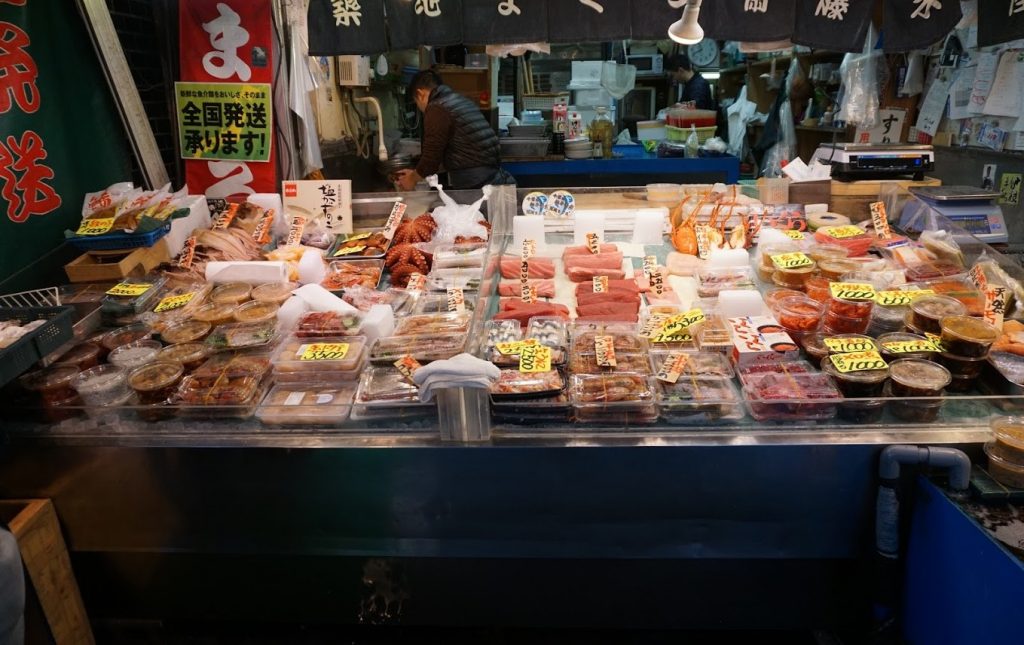
Fresh Seafood and Shellfish
The seasonality of fresh seafood and shellfish turns Tsukiji Market into a place worth visiting multiple times, as the offerings change with the seasons. There are a few ingredients which are available all year round, including shrimps and scallops, which are very popular.
Semi-dried fish
The Japanese use a traditional technique of preserving fish through salting and air-drying called himono. This method not only extends the shelf life of the fish but also enhances its umami flavor, making it more savory and delicious.
Seaweed
Seaweed plays such an important role in Japanese cuisine. You will find many types of seaweed in Tsukiji market, including nori sheets which is needed for sushi and wakame which is excellent for salads.
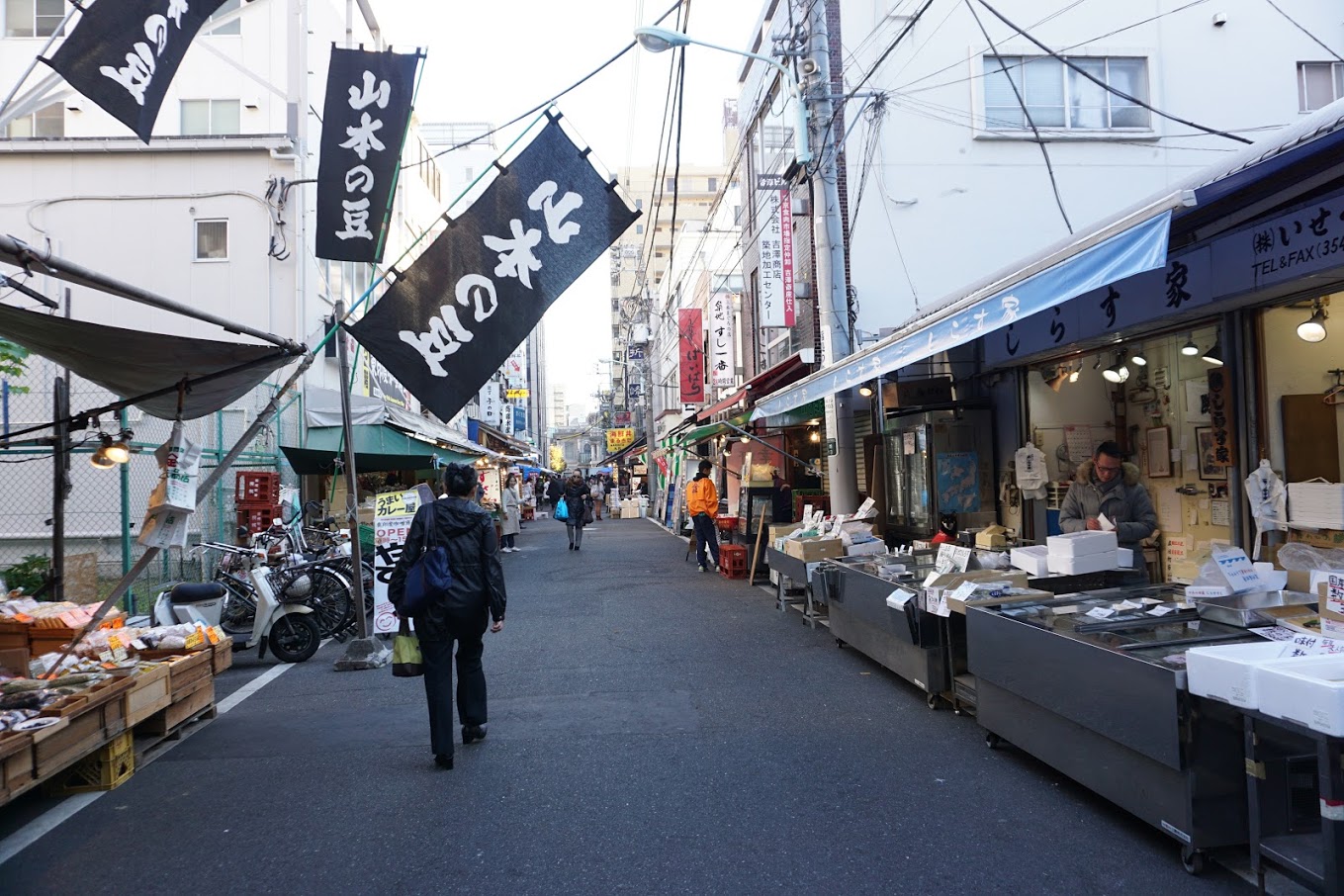
Green tea
Japan is famos for its green tea, and you’ll be able to find plenty of green tea types on every shelf in every shop. Tsukiji market is no exception, as there are a few shops dedicated specifically to selling tea.
Dried foods
Dried food are perfect as souvenirs because they can be easily transported in your suitcase. You’ll find all sorts of ingredients including dried fish, dried bonito flakes (which are splendid for broths) and even grains and cereals. You can see that Tsukiji market, while an exceptional top attraction for visitors, does cater primarily for its residents who come here for everyday shopping items.
Delicacies
Every wanted to try unusual Japanese delicacies? Tsukiji is your place as you’ll find a wide range of chinmi (delicacies). Go for sea urchin, various roe (mullet roe is my favorite) and pickled sea cucumber.
Pickled goods
Tsukemono refers to Japanese pickles, a delightful side that complements a bowl of rice beautifully. Throughout your itinerary in Japan, you will get to sample plenty of them as part of your meals. The good news is that you can buy plenty of airtight sealed Japanese pickles, ideally to take home with you.
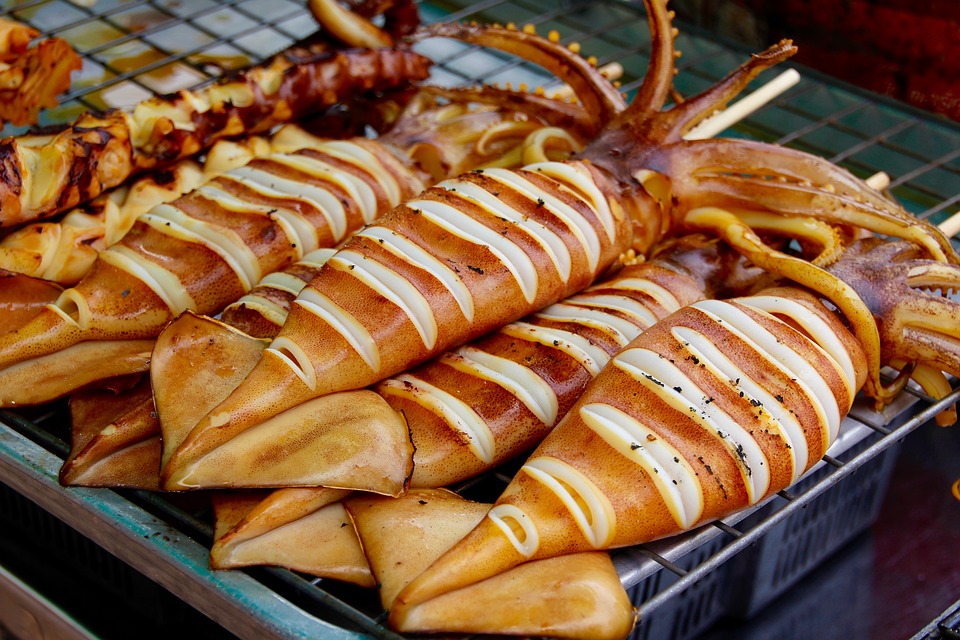
What to eat at Tsukiji Market
Most first time visitors come to Tsukiji to sample the freshest seafood in Tokyo. Now I do need to stress that while Tsukiji is excellent for sushi, sashimi and fresh seafood bowls, it’s not the place for fancy restaurants. Most eateries have down to earth menus with affordable dishes on them.
Sushi
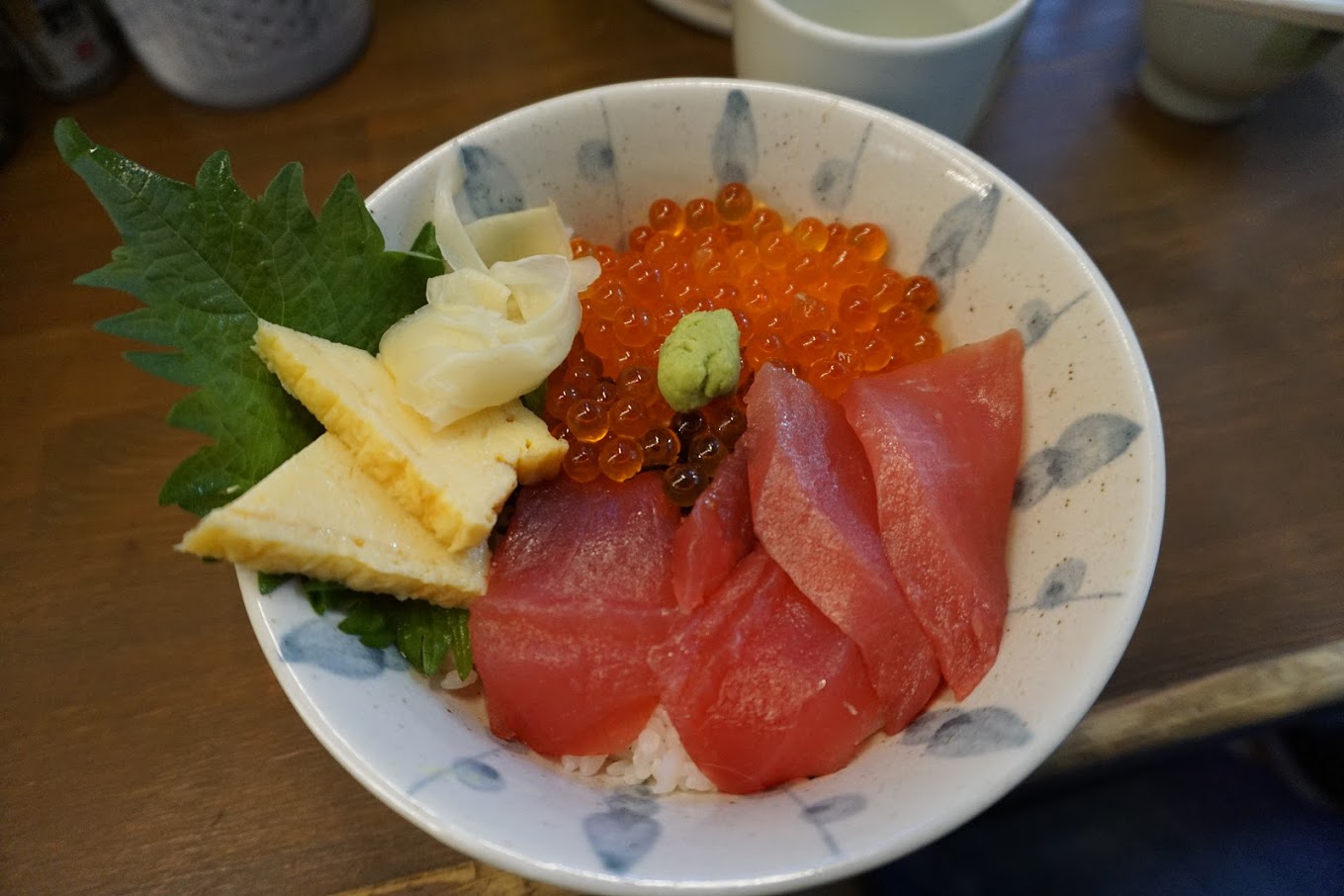
Seafood bowls
These are my favorite because they are basically a large bowl of rice topped with a variety of seafood. It’s my type of donbori, and it’s very delicious for breakfast.
If you want fresh and delicious sushi, you’ll be able to find it at Tsukiji market. You will get some classics, including salmon, tuna, and shrimp, which are available year round, as well as some seasonal specialties.
Sashimi
Sashimi is raw sliced fish served on its own, with no rice. You are meant to eat it with a chopstick, and it’s most delicious when it’s extra fresh. You can eat it with a little soy sauce if you’d like.
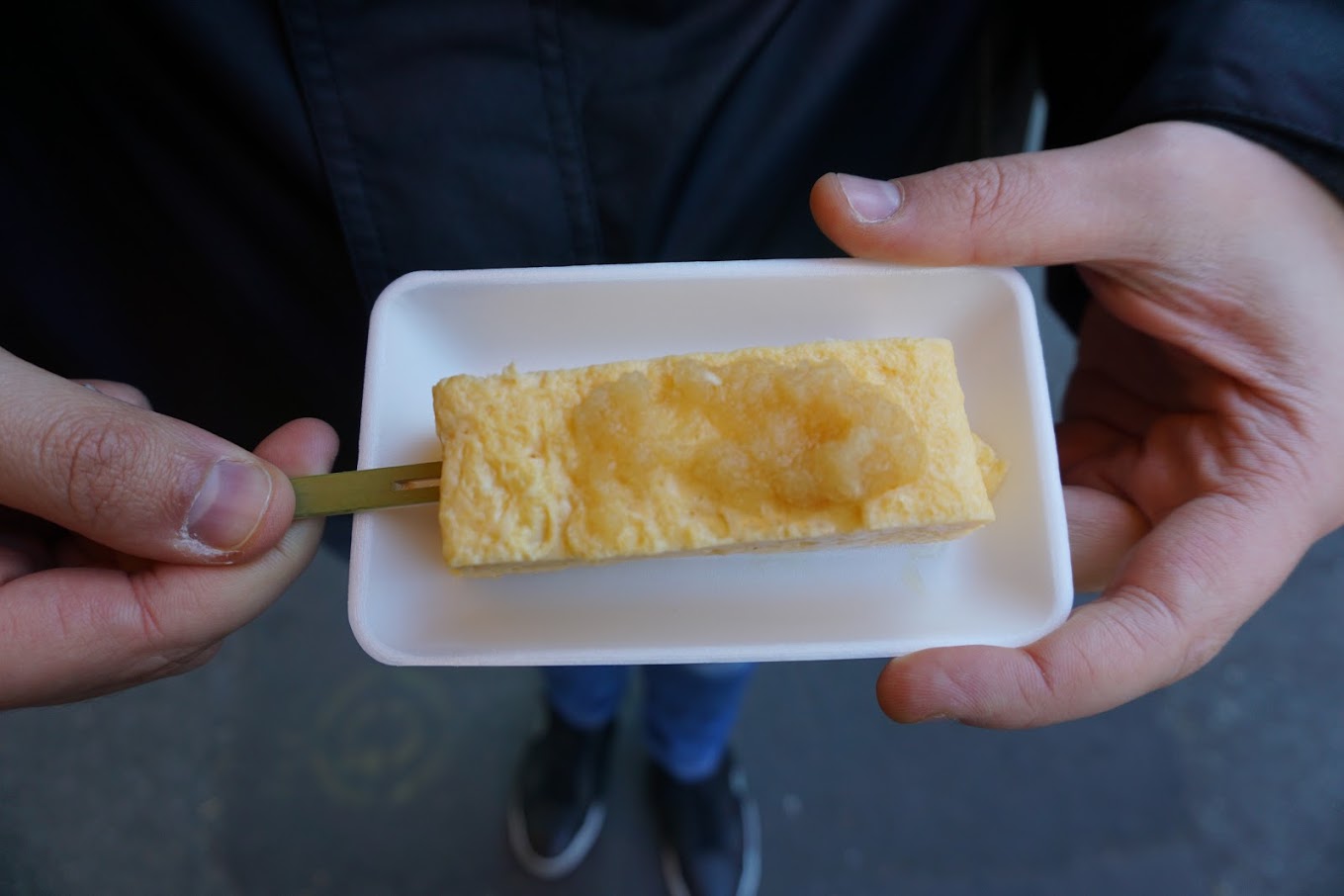
Tamagoyaki
If you don’t want fish for breakfast, don’t worry, you can get a Japanese classic called tamagoyaki. Tamagoyaki is essentially an omelet rolled into layers, creating a distinctive rectangular shape.
Snacks and sweets
Where there are stalls and street food, there are snacks and sweets. You’ll find rice crackers, wagashi and freshly grilled squid served on a skewer. Some stalls specialize in selling fresh oysters and cooked scallops.
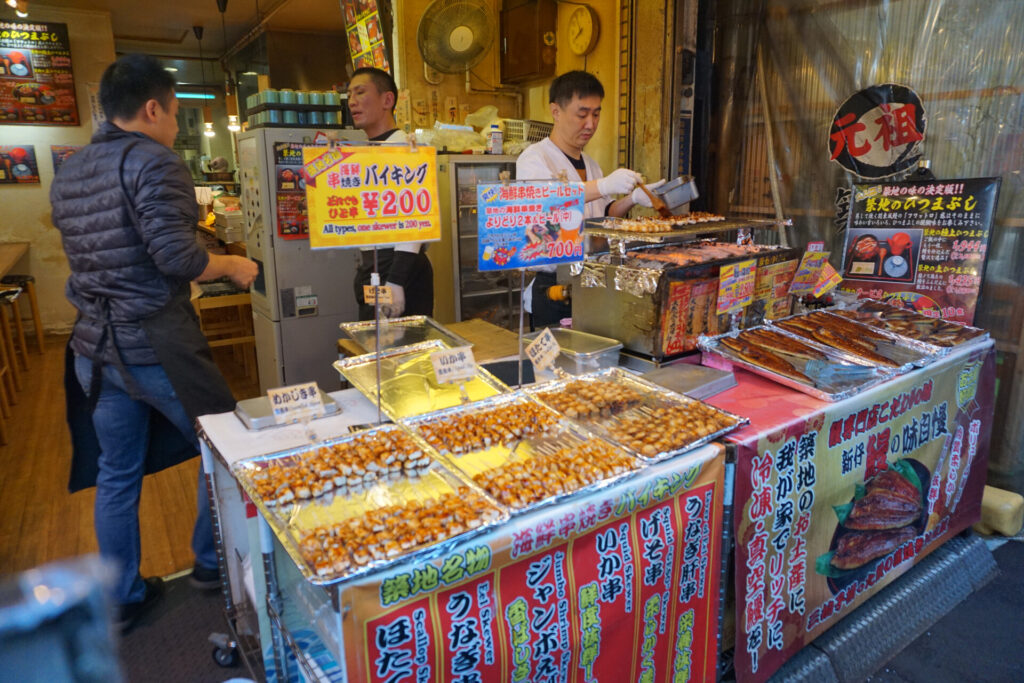
Tips for visiting
Arrive early – My biggest and most important tip is to arrive early at Tsukiji Outer Market, not just for the atmosphere, but also to try the freshest seafood right as shops open. Besides, Tsukiji remains a top attraction and by noon it gets pretty crowded.
Bring cash – Most stalls and restaurants in Tsukiji prefer cash transactions, so have Japanese yen on hand to avoid any inconvenience. There is a Seven Bank ATM within Plat Tsukiji.
Don’t bargain – This is not the place to haggle, Tsukiji Market has set prices. It’s rude to ask for a discount.
Watch for a Knife Sharpening Demonstration – Some cutlery stores in Tsukiji offer live demonstrations of knife sharpening, a skill highly regarded in Japanese culinary arts.
Visit Namiyoke Inari Shrine – Not many people know that Namiyoke Inari Shrine is tucked on the edge of the market and considered the protector of Tsukiji Market and its workers.
Ask before taking photos – Tsukiji is visually stunning, from the food displays to the lively vendors. However, always ask for permission before taking photos, especially of people.
Don’t wear your fancy shoes – Remember this is still a fish market, so some areas will be wet and slippery. Avoid wearing heels or expensive white shoes.
Leave your luggage behind – The Tsukiji Market can get crowded, and it’s not the place to haul your luggage around. There are coin-operated lockers within the Plat Tsukiji.
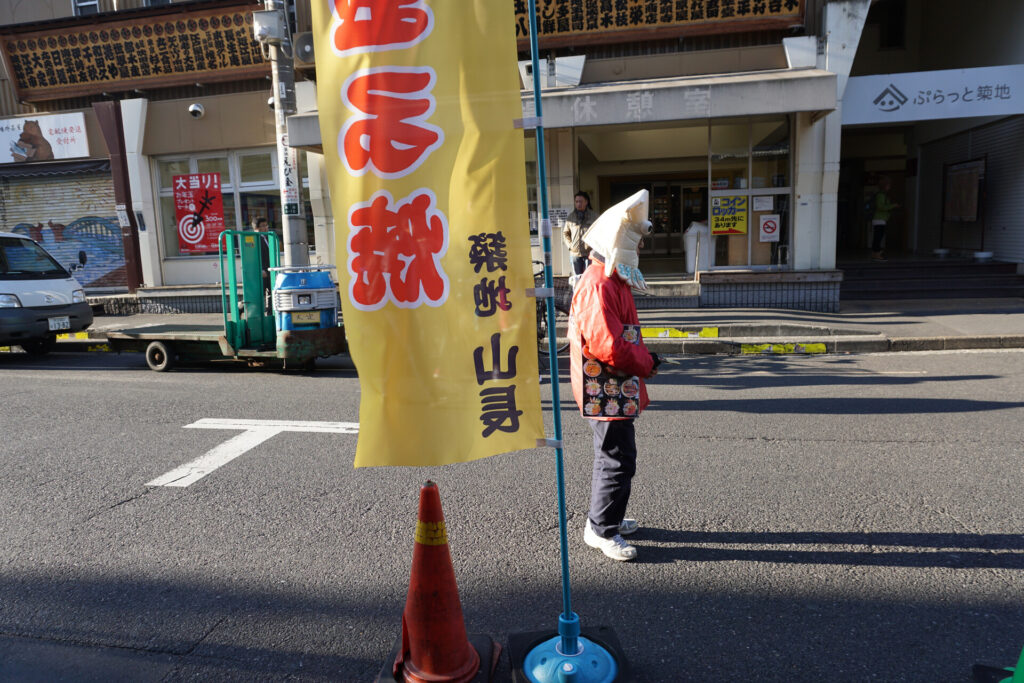
Tsukiji Market Tours
You can absolutely explore Tsukiji Market on your own, but if you want to get a local to show you all the best highlights, there are dedicated tours which can do exactly that. I’ve put together the most popular tours with the top reviews for you.
Tsukiji Fish Market Walking Food Tour – Spend 3 hours with a local guide that takes you around the best areas of Tsukiji. You get to take plenty of photos, sample awesome food and eat a delicious lunch onsite.
Tsukiji Fish Market Half Day Food Tour – Join a guided walking and food tour through Tsukiji Fish Market, where you’ll taste over five exquisite local dishes, including a fresh sashimi seafood bowl.
Tsukiji Fish Market Food and Culture Walking Tour – Take a tour with a professional guide that will take you on a foodie and culture adventure around Tsukiji. You’ll eat some food and snacks and even try a bit of Japanese sake.
Tsukiji Fish Market Visit and Sushi Making Experience – The perfect tour for those who want to visit the Tsukiji market and then learn how to make their own sushi. A local guide will tell you how fish are caught, distributed, and sold. A chef will then teach you how to make nigiri.

How to get there
Getting to Tsukiji Outer Market is straightforward from key locations in Tokyo:
From Tokyo Station: Take the Marunouchi Subway Line to Ginza (3 minutes), then switch to the Hibiya Subway Line to Tsukiji Station (another 3 minutes).
From Shinjuku Station: Hop on the Oedo Subway Line straight to Tsukiji Shijo Station. This takes 20 minutes.
The market is a quick walk from both Tsukiji Shijo and Tsukiji Stations. If you’re near a JR line, head to Shimbashi Station and walk 20 minutes to the market.
Hours and Access
Most shops operate between 9 am to 2pm Monday – Saturday. Some shops are closed on Wednesdays.
Tsukiji Outer Market
Japan, 〒104-0045 Tokyo, Chuo City, Tsukiji, 4-chōme−13, 及び6丁目一部
📞 Contact
🚉 Closest Station (Directions)
Tsukijishijo Sta.
🕥 Opening Hours
9 am to 2pm Monday – Saturday
Frequently Asked Questions
<strong>What days are Tsukiji Market closed?</strong>
Tsukiji Market is usually closed on Sunday and national holidays. Some shops are closed on Wednesday.
What happened to the wholesale fish market in Tsukiji?
The wholesale part of Tsukiji, where they did the big tuna auctions, moved to Toyosu Market in 2018. Tokyo did this to update the facilities and make more room for business. Now, Toyosu is the main spot for wholesale fish in Tokyo.
When’s the best time to go to Tsukiji Market?
Morning time is prime time at Tsukiji Outer Market. Try to get there before noon. Shops and eateries open around 9 AM and start closing down after lunch. The earlier you go, the fresher your seafood will be.
Can I still visit Tsukiji Market?
Tsukiji Outer Market remains one of the top attractions in Tokyo. Even though the wholesale fish business moved to Toyosu, Tsukiji Outer Market is alive and kicking with stores, food stalls, and restaurants serving up fresh seafood and more. It’s still a hit with both locals and visitors.

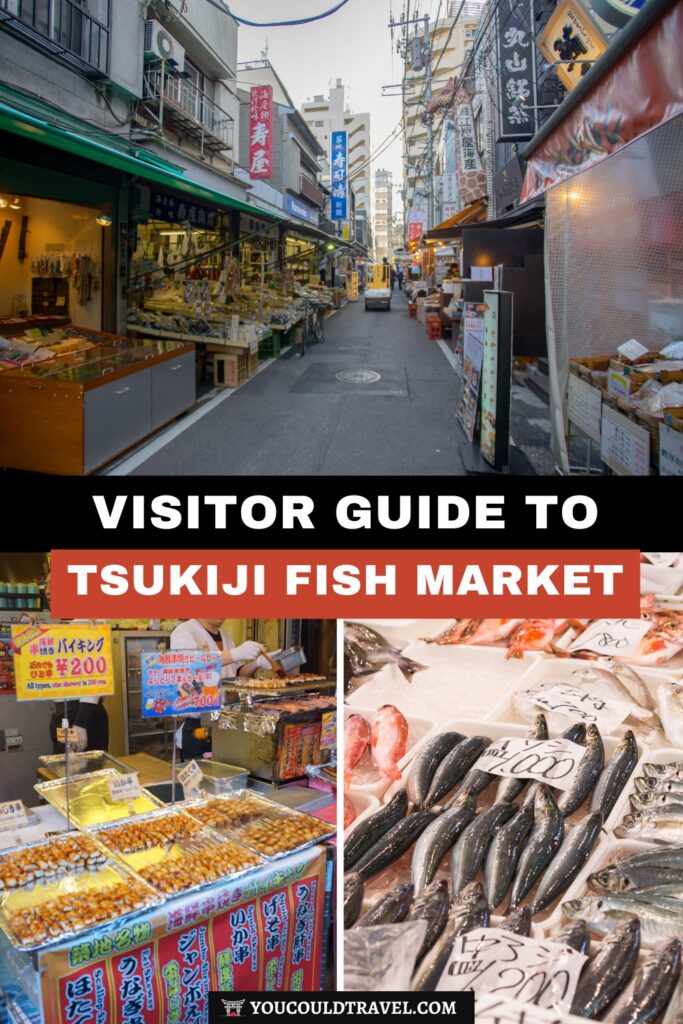

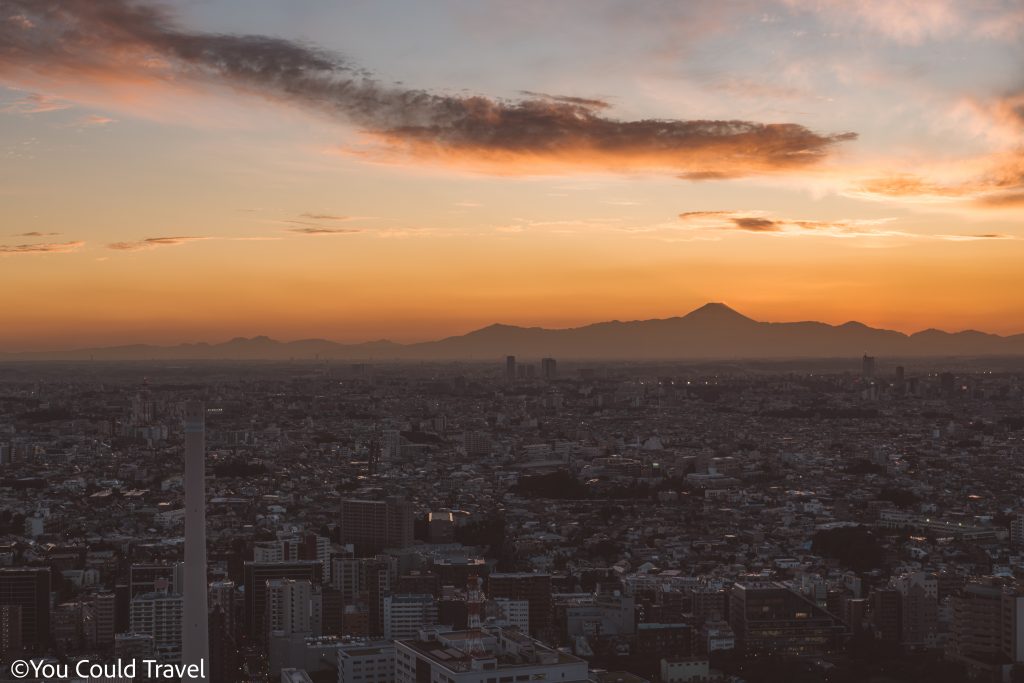
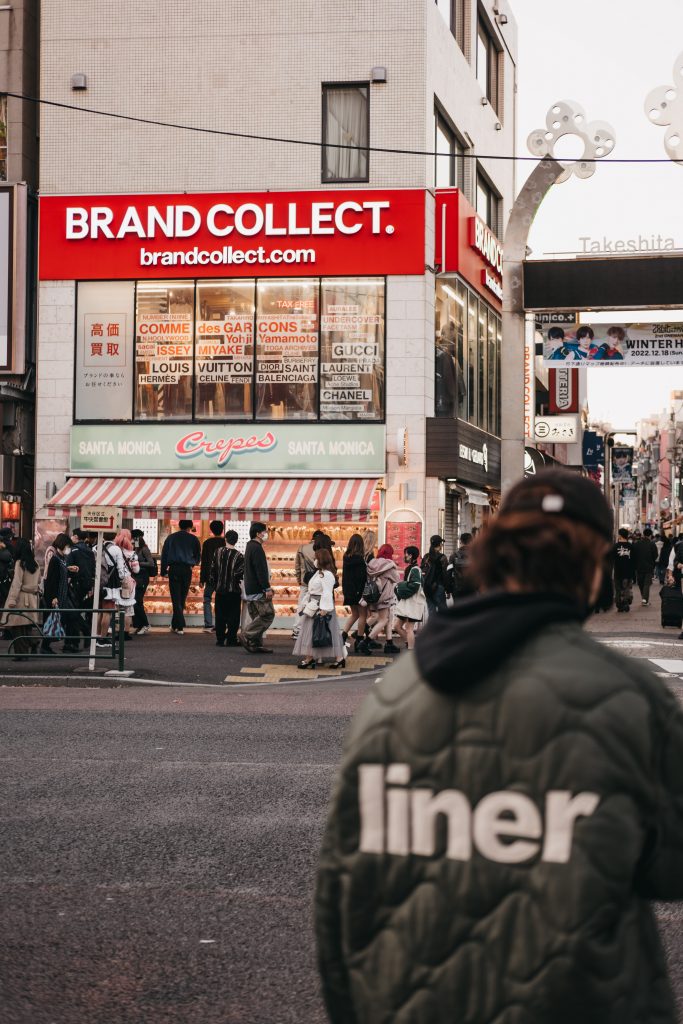

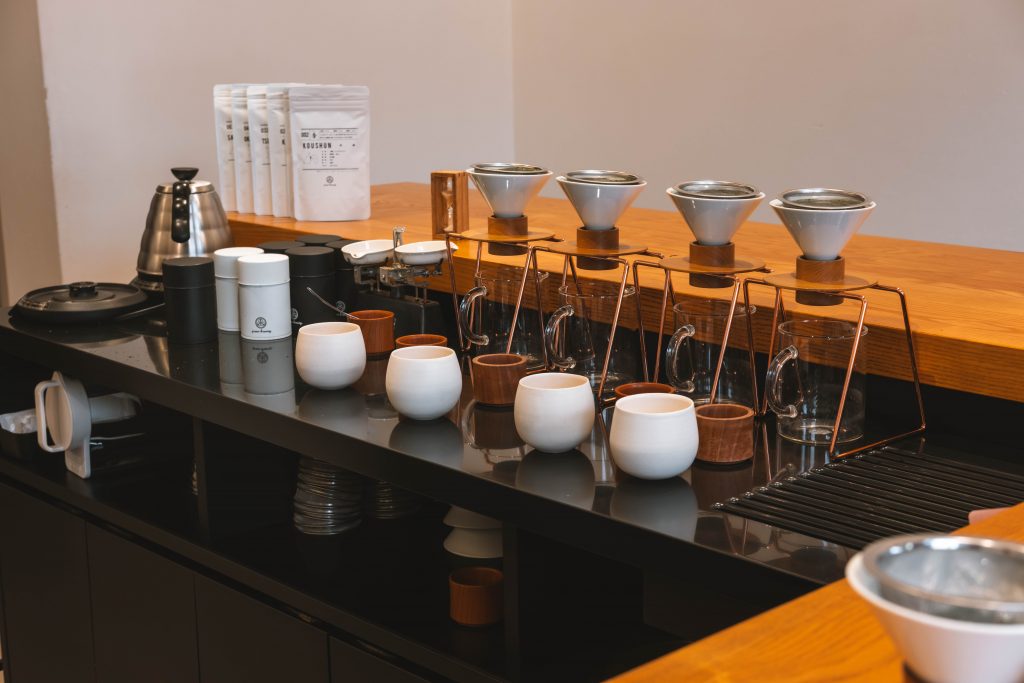

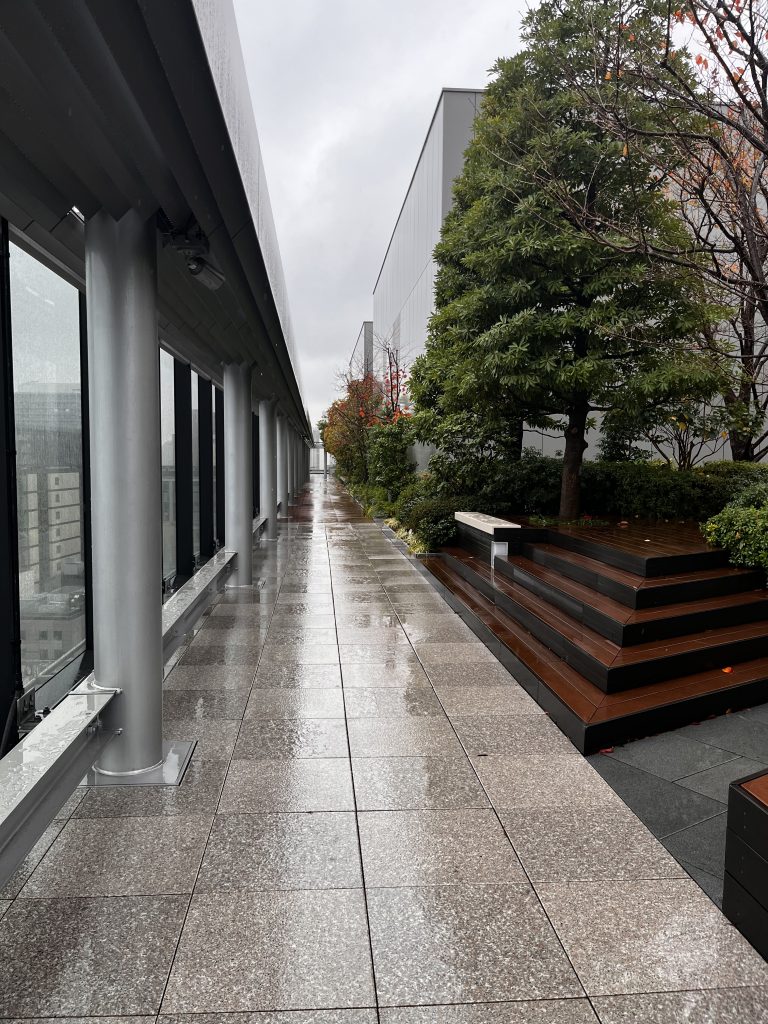


Leave a Reply